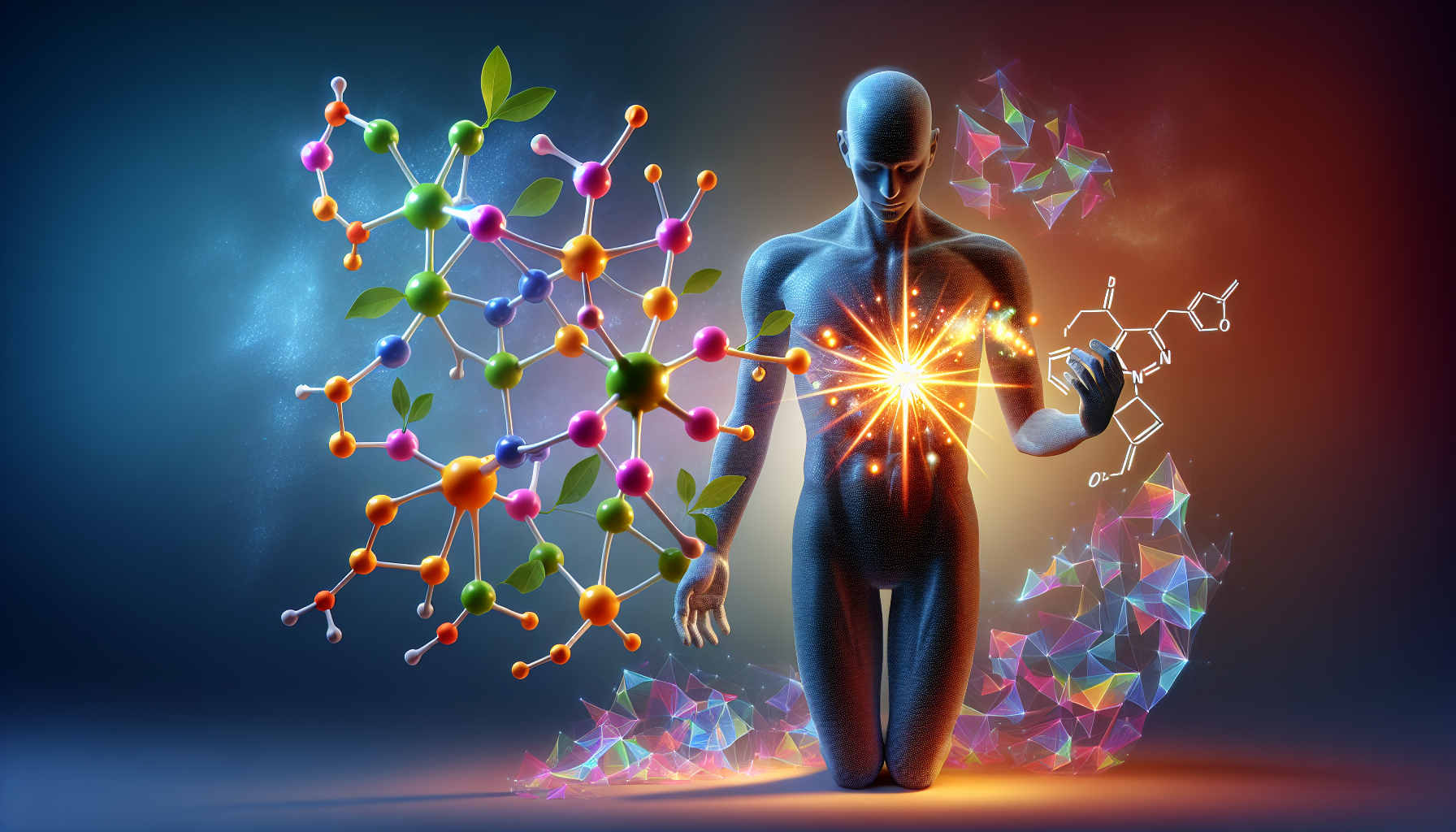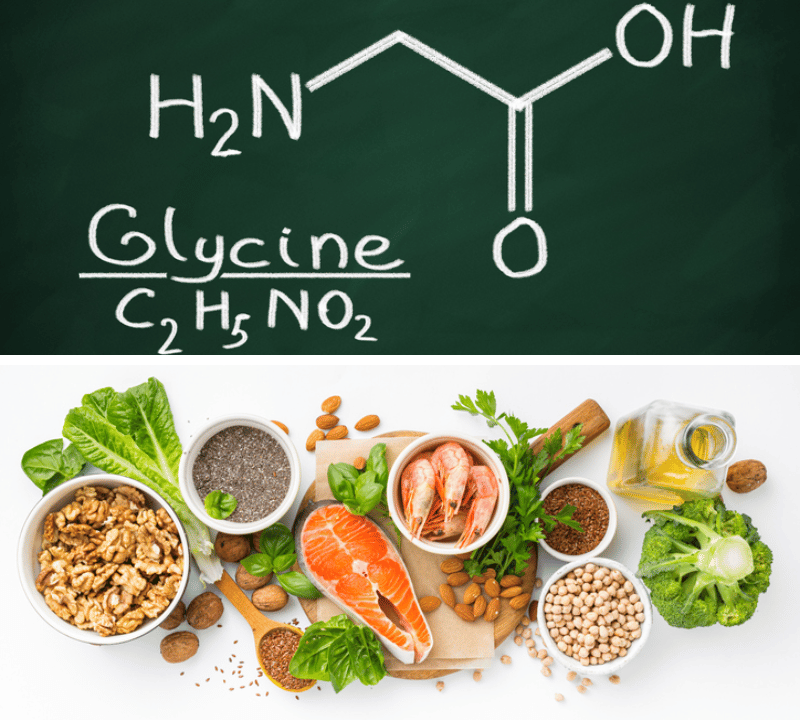What depletes glycine in the body, and why is it a concern? In the important balance of nutrition and health, glycine emerges as a pivotal player, weaving through our body's most essential processes. Yet, this nonessential amino acid, fundamental for collagen production, detoxification, neurotransmission, and energy provision, faces a constant battle against depletion. Various elements, from the food we consume to the stress we endure and the illnesses that besiege us, can lower our plasma glycine levels, subtly undermining our well-being. This article dives deep into the causes behind glycine depletion, highlighting the critical roles of diet, lifestyle, chronic illness, and genetics. By understanding these factors, we unlock the door to maintaining optimal health and preventing the adverse consequences of glycine deficiency.
You may wonder why the depletion of glycine should pique your interest. Because glycine is the backbone for collagen production, the most abundant protein that holds our body together and plays a crucial role in the reaction catalyzed for glutathione production, our body's master antioxidant. It is an important signaling molecule that influences gene expression, cell growth, and the health of blood vessels. Moreover, glycine's role in metabolic processes, from bile acids and fatty acid synthesis to improving glucose tolerance and insulin sensitivity observed, underscores its indispensability. Yet, the balance is delicate. High dietary intake of methionine, found abundantly in muscle meat, and insufficient intake of serine and glycine can lead to glycine depletion, impacting everything from collagen to glutathione glycine levels. This article explores these challenges and offers insights into dietary supplementation and strategies to enhance glycine availability, ensuring your body doesn't run short of this critical nutrient. Join us as we navigate the intricacies of maintaining adequate glycine levels for a healthier, more vibrant life.
Key Takeaways
- Diet, lifestyle, chronic illness, and genetic factors all play critical roles in determining glycine levels, with certain diets high in methionine or conditions of stress and disease increasing the demand for glycine.
- Glycine is essential for various bodily functions such as collagen synthesis, detoxification, neurotransmission, and energy provision, making it indispensable for health and well-being.
- Glycine supplementation may be beneficial in cases of inadequate dietary intake or increased bodily demands, and maintaining a balance of amino acid intake is critical for preventing health issues related to glycine deficiency.
The Glycine Drain: Factors That Contribute to Depletion

Glycine balance is a delicate dance of synthesis, intake, and utilization. When this balance is offset, the consequences can be far-reaching. Changes in our diet, chronic illness, and genetic makeup can influence glycine levels. We should examine the factors contributing to glycine depletion more thoroughly.
The consumption of certain foods, particularly those high in methionine, seems to temporarily affect glycine levels. Methionine, an abundant amino acid in muscle meats (a T-Bone steak, for instance), can tip the scales, leading to a transient rise in homocysteine levels after meals, illustrating the delicate balance in our dietary glycine intake.
Meanwhile, our lifestyle choices and health status also play a role. Chronic stress and long-term illness can ramp up the body’s demand for glycine, accelerating its utilization and potentially leading to depletion.
Genetic variations further complicate the glycine balance. Specific genes, such as CPS1 and ALDH1L1, can influence glycine metabolism, resulting in altered glycine synthesis and availability. This genetic interplay emphasizes the complexity of maintaining glycine levels and understanding how our unique genetic makeup can affect glycine metabolism.
High Methionine Intake from Muscle Meats
While the body requires methionine for various functions, including protein synthesis and methylation processes, a diet abundant in this amino acid may temporarily affect glycine levels, as methionine depletes glycine. This is particularly true for diets high in muscle meats such as chicken breast, lean beef, and pork loin. Other non-muscle meat foods high in methionine are egg whites, seafood, and some nuts and seeds.
The consumption of these foods can cause a temporary rise in homocysteine levels post-meals. However, it’s important to note that no conclusive evidence links a high methionine intake from muscle meats to harmful rises in homocysteine for healthy individuals.
A clear comprehension of the methionine-glycine relationship allows us to make dietary choices that maintain a healthy glycine balance and ensure adequate protein intake.
Chronic Illness and Stress
Chronic illness and stress can place an immense burden on our bodies, disrupting various biological functions. This disruption, known as “allostatic load,” can lead to a variety of health problems, including:
- Insulin resistance
- Hyperglycemia
- Inflammation
- Metabolic syndrome
Prolonged stress can also drive us towards unhealthy dietary choices, such as an increase in nutrient-poor foods. These choices can exacerbate metabolic risk and amplify the body’s need for essential nutrients, including glycine. The combined impact of metabolic syndrome and chronic stress can heighten the body’s demand for glycine, leading to its accelerated utilization and potential depletion.
Hence, preserving glycine levels necessitates a balanced diet and effective stress management.
Genetic Variations Affecting Glycine Metabolism
Our genetic makeup can play a significant role in glycine metabolism. Specific gene variants, such as those found in the CPS1 gene, directly affect glycine metabolism. These genetic variations can influence the urea cycle, the body’s primary process for removing harmful ammonia, resulting in increased production or altered regulation of glycine.
Another gene, ALDH1L1, also plays a crucial role in glycine metabolism. Variations in this gene can affect the glycine-to-serine ratio, indicating a genetic influence on the interconversion of these amino acids. Understanding these genetic influences can help us better manage glycine levels and sidestep potential health issues related to glycine deficiency.
The Role of Glycine in the Body

Glycine may be one of the smallest amino acids, but its role in the body is significant. From building proteins like collagen to aiding in detoxification and neurotransmission, glycine is a versatile player in our body’s biological orchestra.
As a major component of collagen, glycine provides structure to our bones, skin, muscles, and connective tissues. This tiny molecule also carries an impressive resume in the detoxification department, binding to toxins for clearance from the body. Beyond these roles, glycine participates in nerve signal transmission and even helps synthesize creatine, which provides energy to our muscles and brain.
Understanding glycine's various bodily roles allows us to appreciate its significance in our health and well-being. We should further explore these roles.
Glycine as a Building Block for Proteins
Glycine is a vital building block for proteins, particularly collagen. This protein is found abundantly in our:
- skin
- ligaments
- muscles
- bones
- cartilage
About 33% of its structure is composed of glycine.
The health of our connective tissues greatly depends on glycine. For example, glycine can increase collagen synthesis in articular chondrocytes, the cells responsible for maintaining cartilage health. Therefore, maintaining optimal glycine levels is vital for the health and integrity of our connective tissues.
Glycine's Involvement in Detoxification Processes
As a crucial player in detoxification processes, glycine aids the body in getting rid of harmful substances. It binds to toxins, facilitating their clearance from the body, and is involved in the second phase of liver detoxification.
In addition, glycine is essential for:
- the synthesis of glutathione, a potent antioxidant that plays a crucial role in neutralizing reactive oxygen species and maintaining the body’s redox balance
- helping rid the body of toxins
- fortifying its defenses against oxidative stress.
Glycine's Impact on Neurotransmission and Cell Growth

Beyond serving as a building block for proteins and a detoxifier, glycine also significantly impacts neurotransmission and cell growth. It is critical in regulating nerve impulses within the central nervous system as an important signaling molecule.
Glycine’s influence is not limited to adulthood; it also plays a crucial role in early neural development. Glycine receptors and transporters appear early in the developing brain, particularly in the embryonic cortex, controlling extracellular glycine levels vital for neuronal development. This highlights the importance of maintaining adequate glycine levels for optimal health in adulthood and proper neural development during embryonic stages.
Dietary Sources and Supplementation Strategies
While the body can synthesize glycine, it is not always sufficient to meet the body’s demands, especially during periods of growth, stress, or illness. Hence, it becomes necessary to supplement our glycine levels through diet or supplementation.
Glycine can be found across various dietary groups, including legumes, fish, dairy, and meat. Specific glycine-rich foods encompass red meat, seeds, turkey, chicken, pork, peanuts, and more. But what if our dietary intake is insufficient, or we have increased requirements due to certain health conditions or lifestyle factors? This is where supplementation strategies come into play.
Glycine supplements are generally considered safe if used as directed and have been studied for potential benefits in:
- Mood
- Memory
- Sleep Quality
- Heart health
However, it is vital to maintain a balanced intake of amino acids to avoid overconsumption of any single amino acid. We should investigate these aspects more precisely.
Identifying Rich Dietary Sources of Glycine

In nutrition, ensuring adequate glycine intake is paramount, particularly for those undergoing periods of rapid growth, facing elevated stress levels, or battling illness. As a conditionally essential amino acid, glycine can be synthesized in our body. However, we can also obtain it from various dietary sources, particularly high-protein foods. This underscores the importance of seeking glycine-rich dietary sources or contemplating dietary supplementation to bolster glycine levels.
Many dietary options abound for those looking to augment their glycine intake. Diverse food groups, including legumes, which stimulate protein synthesis, and fish, known for its fatty acids and glycine content, offer natural avenues to increase glycine levels. Moreover, dairy products, meats, such as red meat and poultry (turkey and chicken), and pork and peanuts, are lauded for their significant contributions to circulating glycine levels through diet. Yet, when dietary sources fall short or individual needs escalate due to specific health conditions or lifestyle demands, turning to glycine supplementation becomes a strategic approach to ensure adequate availability of this crucial amino acid.
Incorporating glycine into one's regimen through supplements is a practical method to enhance mood, bolster memory, improve sleep quality, and support heart health, highlighting the multifaceted benefits of this amino acid. Nonetheless, it's imperative to approach supplementation with mindfulness, aiming for a harmonious balance of amino acids to preclude the pitfalls of overconsumption. By integrating a variety of glycine-rich foods and considering supplements when necessary, individuals can adeptly navigate their way toward optimal health, considering glycine's critical role in collagen production, glutathione synthesis, and overall metabolic health.
For those intrigued by the prospect of adding glycine supplements to their health and wellness routine but uncertain where to start, we've crafted a comprehensive review article: “Unearthing the Secrets: The Best Glycine Supplement Guide for Modern Wellness!” This guide meticulously examines five top glycine supplements available on Amazon, providing insights to help you make an informed decision tailored to your health goals. Explore our findings and recommendations to discover the ideal glycine supplement that aligns with your journey toward achieving modern wellness. 👇
Balancing Amino Acid Intake
While focusing on glycine, it’s crucial to remember that balance is key in nutrition. A balanced intake of amino acids, including glycine, is necessary for optimal health rather than excessive consumption of any single amino acid.
Our bodies continually recycle dietary amino acids, including essential amino acids, for new protein synthesis, demonstrating our ability to maintain amino acid balance under normal conditions. By ensuring a balanced intake of amino acids from various high-protein foods, we can support our overall health and well-being, highlighting the importance of a balanced and varied diet with an optimal amino acid composition.
The Interplay Between Glycine and Other Amino Acids
Glycine doesn’t work in isolation. It interacts with other amino acids in complex metabolic pathways, affecting their metabolism and our overall health. The interplay between glycine and other amino acids illustrates the interconnected nature of our metabolism.
For instance, glycine metabolism is closely tied with the metabolism of other amino acids like serine, threonine, and alanine. Alterations in dietary protein intake can influence this interplay and affect whole-body glycine metabolism.
Moreover, glycine’s catabolism or breakdown can also impact other amino acids. In certain bacterial species, alterations in glycine metabolism can significantly affect the metabolism of serine and threonine, highlighting the complex interactions within our metabolic network.
We should examine these interactions more thoroughly.
Competition and Cooperation in Amino Acid Metabolism
Amino acids, including glycine, partake in a delicate balance of competition and cooperation within metabolic pathways. Glycine can compete with other amino acids for transport across cell membranes, illustrating the competitive aspect of amino acid metabolism.
At the same time, glycine cooperates with other amino acids in various metabolic processes. Elevations in branched-chain amino acids in obese and insulin-resistant individuals, for instance, often coincide with decreases in circulating glycine levels, indicating a cooperative relationship between the metabolism of glycine and branched-chain amino acids.
Understanding these interactions can help us optimize our metabolic health.
The Significance of the Glycine Cleavage System
The glycine cleavage system (GCS), including de novo glycine synthesis, is critical in glycine metabolism. This complex pathway breaks down glycine into CO2 (carbon dioxide), NH4+ (ammonium), and a methylene group, contributing to the availability of amino acids. In vertebrates, the GCS is anchored to the mitochondrial inner membrane and plays an essential role in glycine metabolism and other amino acids like serine.
The GCS also plays a significant role in maintaining glycine levels. Mutations in components of the GCS can lead to non-ketotic hyperglycemia (NKH), characterized by excess glycine accumulation. This highlights the importance of the GCS in maintaining glycine balance and overall metabolic health.
Glycine and Fatty Acid Metabolism
Glycine’s role extends beyond amino acid metabolism to impact fatty acid metabolism. It aids in lipid digestion by serving as a component for conjugating bile acids, vital for emulsifying fats.
Glycine has several important functions in the body, including:
- Participating in detoxifying aromatic acids (i.e., phenol, aniline, benzoic acid, etc.)
- Playing a role in fatty acid metabolism
- Influencing the body’s resistance to certain metabolic disorders
These functions highlight the far-reaching impacts of glycine on our health.
Impacts of Glycine Deficiency on Health
Given glycine's diverse roles in the body, it’s unsurprising that glycine deficiency can lead to various health problems. Some of the health problems associated with low levels of glycine include:
- Neurological disorders
- Metabolic diseases
- Sleep disorders
- Cognitive dysfunction
- Mood disorders
- Digestive issues
Maintaining adequate levels of glycine to support overall health and well-being is important.
Glycine deficiency can lead to:
- Neurological motor disorders such as hyperekplexia
- Cognitive functions in adulthood
- Metabolic diseases such as obesity, type 2 diabetes, and non-alcoholic fatty liver disease
- Cardiovascular health issues include increased risk of diseases through its influence on platelet aggregation and protection against myocardial ischemia-reperfusion injury (occurs when restoring blood flow to the heart after a blockage fails to fully revive the affected tissue and causes additional damage).
Recognizing the potential health impacts of glycine deficiency can assist us in managing our glycine levels and avoiding potential health issues. We should delve into some of these impacts in more detail.
Glycine and Insulin Sensitivity
Glycine plays a significant role in glucose metabolism and insulin function. Low glycine levels are associated with an increased risk of developing insulin resistance, implicating glycine in regulating glucose metabolism and the functionality of insulin-producing pancreatic cells.
Furthermore, low serum glycine concentrations have predicted type 2 diabetes development. Glycine’s influence on fatty acid metabolism is also linked with obesity and insulin resistance, as seen in nonalcoholic fatty liver disease (NAFLD). These connections underscore the importance of maintaining optimal glycine levels for metabolic health.
Effects on Collagen Synthesis and Connective Tissue Health
Deficiency in glycine can impair the synthesis of collagen, which is crucial for the structural integrity and healing of connective tissues. When collagen production is compromised due to inadequate glycine, connective tissues may suffer, leading to joint disorders and poor wound healing.
Inadequate glycine levels can also hinder cartilage regeneration in conditions like osteoarthritis due to reduced collagen synthesis. This highlights the importance of glycine in maintaining the health of our connective tissues and the potential implications of glycine deficiency.
Glycine's Role in Glutathione Production and Antioxidant Defense
Glycine is critical in producing glutathione, a potent antioxidant that defends the body against oxidative stress. In conditions characterized by increased oxidative stress, such as diabetes, depletion of both cysteine and glycine can impair glutathione levels, thus weakening the body’s defense against reactive oxygen species and contributing to disease progression.
Supplemental dietary glycine has demonstrated efficacy in boosting tissue glutathione levels in animal studies, suggesting its beneficial role in human health, particularly in those with limited protein intake. Therefore, maintaining adequate glycine levels is important for our metabolic health and our body’s antioxidant defense and glutathione synthesis.
The Final Word on Glycine: Comprehensive Sources and Health Guide
Glycine, far more than just a simple amino acid, plays an indispensable role in the myriad functions of our body, underscoring its critical presence in everything from protein biosynthesis and collagen production to supporting detoxification pathways, neurotransmission, and metabolic health. Its pivotal contributions extend to enhancing mood, memory, sleep quality, and heart health, showcasing the broad spectrum of its influence. Given its central role, understanding glycine depletion dynamics—whether through dietary choices, lifestyle factors, chronic illnesses, or genetic predispositions—is essential. Recognizing the signs of glycine deficiency and knowing how to effectively counterbalance this through dietary sources rich in this amino acid, such as legumes, fish, dairy, and meat, and when necessary, targeted dietary supplementation are key steps in safeguarding our well-being. As we delve deeper into the complex interactions of amino acids within our system, the importance of maintaining an optimal glycine balance becomes ever more apparent.
For those keen on further optimizing their glycine intake and understanding its vast benefits, we have prepared an in-depth article titled “Discovering What is the Best Source of Glycine: Your Ultimate Guide to This Essential Amino Acid.” This comprehensive guide is your gateway to unraveling the most effective sources of glycine, ensuring you are well-equipped to meet your health and wellness goals. 👇
Frequently Asked Questions
What causes glycine deficiency?
Glycine deficiency is caused by a deficiency of the enzyme that breaks down glycine, which results from changes in specific genes such as AMT, GLDC, or GCSH. This leads to accumulating large quantities of glycine in body tissues, including the brain (GeneReviews®, NCBI).
What decreases glycine?
Obesity and metabolic disorders are associated with decreased plasma glycine concentration due to elevated plasma glucagon concentrations, increased glycine degradation, and impaired hepatic branched-chain amino acid metabolism. This decrease in glycine is closely linked to insulin resistance and the risk of developing chronic metabolic diseases.
What are the symptoms of low glycine levels?
Low glycine levels can lead to symptoms such as poor feeding, lethargy, hypotonia, breathing problems, seizures, and coma, which typically start within a few days of life.
How do you increase glycine absorption?
To increase glycine absorption, consider taking collagen protein supplements, which can be more efficient due to glycine's competition with other amino acids for absorption.
What are some dietary sources of glycine?
You can find glycine in legumes, fish, dairy, red meat, turkey, chicken, pork, granola, quinoa, and soybeans. These are just a few examples of dietary sources of glycine.
Thanks for taking this journey to explore this simple question: "What depletes glycine in the body?" We hope this discussion has helped clarify the importance of this amazing amino acid and its many roles in supporting overall good health and longevity. Also, if you want to add to your library of knowledge, you should check out the other articles mentioned and linked above. It never hurts to add to your knowledge arsenal!
Please return soon to check out our next review of another incredible supplement – we’re always looking out for YOU!
*We are NOT qualified medical advisors. The content here is only based on our personal opinions and should NOT be used as a substitute for a healthcare professional's advice!











Member discussion